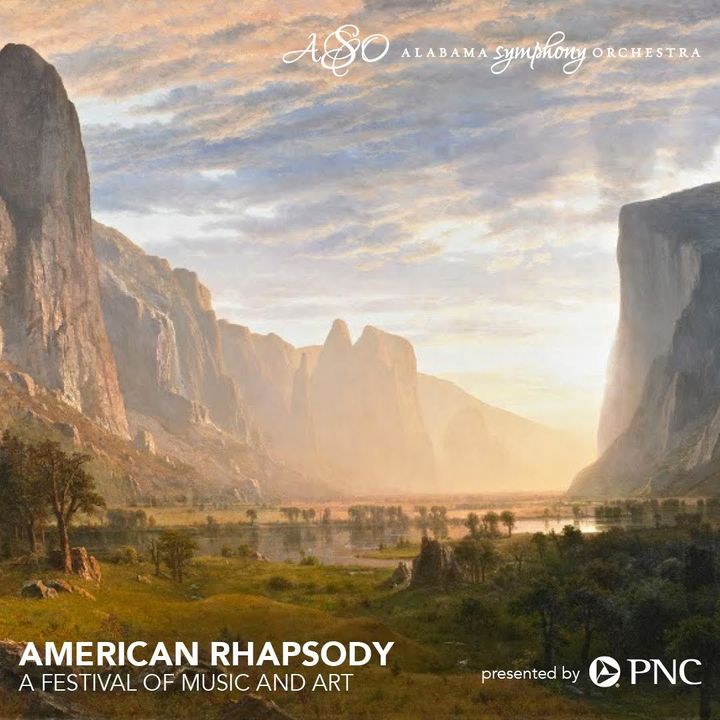
Image courtesy Alabama Symphony Orchestra and Birmingham Museum of Art. Painting by Albert Bierstadt.
In his Letter from Birmingham Jail, Martin Luther King, Jr. stated, “In a real sense, all life is interrelated. All men are caught in an inescapable network of mutuality, tied in a single garment of destiny.” More than forty years after King was wrongfully imprisoned for his part in boycotts and ‘unlawful gatherings’, integration in Birmingham has finally been achieved through urban renewal—integration of races, religions, cultures, and environments. Things are not perfect but progress is being made, and a cultural Renaissance is developing in downtown Birmingham.
The Alabama Symphony Orchestra and Birmingham Museum of Art partnered in January 2017 to host “American Rhapsody: A Festival of American Music and Art.” One well-attended event focused on Jewish-American composers, specifically Leonard Bernstein, Aaron Copeland, and Richard Danielpour. A standing ovation was given after the symphony and ASO chorus performed Bernstein’s Chichester Psalms in Hebrew. This is in a region of Alabama that hosts NASCAR at Talladega Superspeedway.
Near the Alys Stephens Center, where the Alabama Symphony Orchestra performs, the well-regarded Alabama Ballet is headquartered. The Alabama Ballet draws principal dancers from nations including Russia, China, and Japan. The Alabama Ballet is one of only eight companies in the world licensed by The Balanchine Trust to perform George Balanchine’s The Nutcracker®. This February, notable company dancers including John Mingle IV will perform Giselle, a French Romantic ballet.
Before they attend the ballet, people often walk through downtown’s Railroad Park, a marvel of adaptive re-use. The park includes 19 acres of green space and a bio-filtration wetlands area. A Rail Trail runs the length of the park and is used for activities including biking and jogging. Recycled materials including hand-cast brick and cobblestone are used for walls and benches. A Railroad Park Dining Car remains as a nod to Birmingham’s past as an iron and steel producing center. Native plants are often used in landscaping here to preserve water.
Regional vegetables are celebrated in the farm-to-table cuisine of Alabama native Frank Stitt, the chef and owner of three award-winning restaurants south of downtown. Stitt was named “Best Chef in the Southeast” by the James Beard Foundation and was recognized with a Lifetime Achievement Award from the Southern Foodways Alliance.
The visual arts in Birmingham are vibrant as well. Notable artist William McLure has modern paintings displayed in galleries across the South and in magazines including Southern Living, which is based in Birmingham. Though McLure travels to Manhattan and other cities for commissions, the artist is proud to call Birmingham home. Regional magazines often photograph William McLure’s paintings alongside antiques in a nod to traditional Southern interior design.
In downtown Birmingham’s cultural Renaissance, symbols of the past are often adapted rather than destroyed. Unlike Atlanta, where developers usually tear down historic buildings in favor of glass and steel high-rises or McMansions, Birmingham is a place where soot-covered brick is preserved on both boutiques and nightclubs. The renowned Birmingham Civil Rights Institute (BCRI) is a transitionally-styled brick structure with antique-inspired iron streetlights in front. BCRI placed a statue of civil rights leader Rev. Fred L. Shuttlesworth near the museum’s entrance. The Alabama-born Shuttlesworth was once persecuted on the streets of Birmingham by the forces of the public safety commissioner at the time, Eugene “Bull” Connor.
Now Rev. Shuttlesworth stands firm to welcome all, a symbol of what Birmingham has become.
